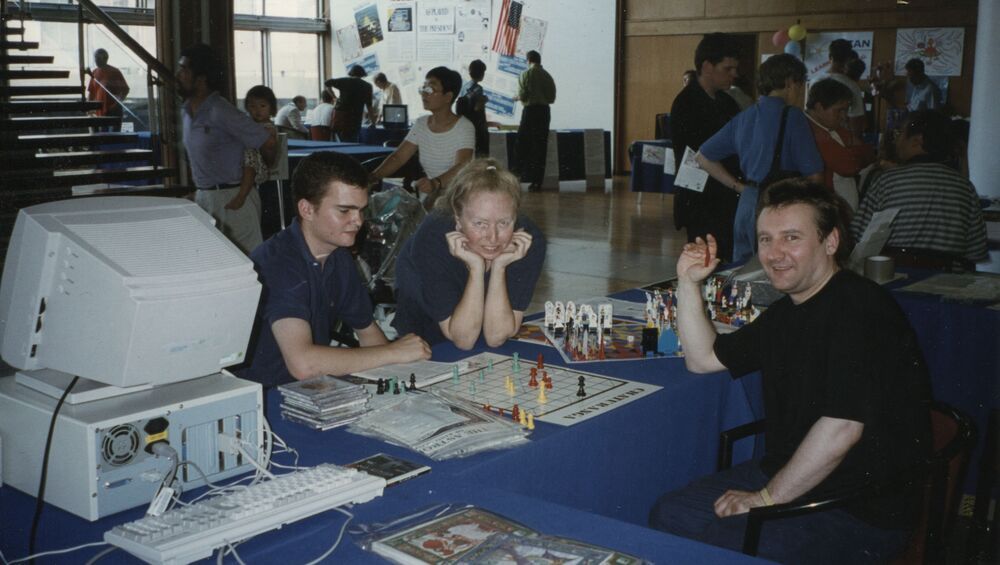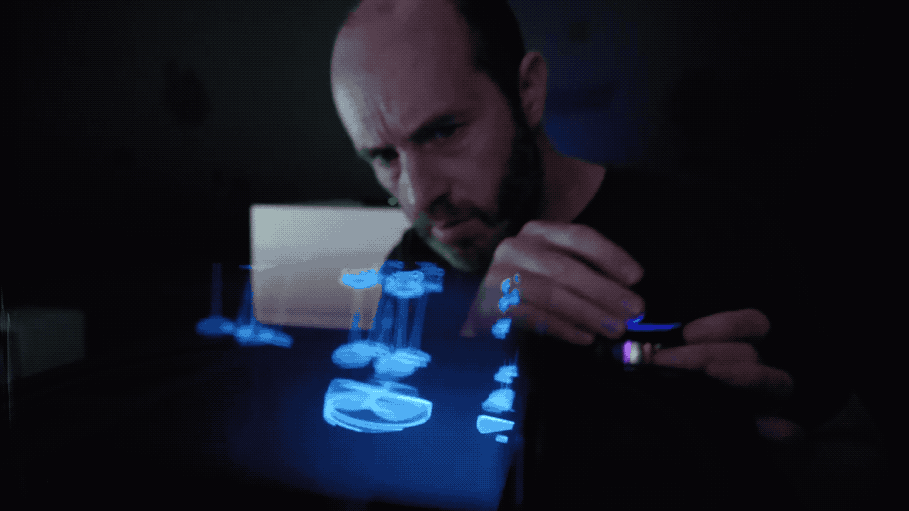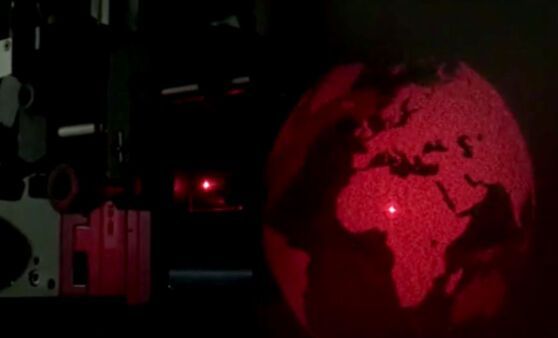Once, holograms were just a scientific curiosity. But thanks to the rapid development of lasers, they have gradually moved center stage, appearing on the security imagery for credit cards and bank notes, in science fiction movies—most memorably Star Wars—and even “live” on stage when long-dead rapper Tupac reincarnated for fans at the Coachella music festival in 2012.
Category: holograms – Page 16

Bundex Film Archive 1990’s
Blog — Bundex Film Archives coming to posthuman university.
As editor, sound engineer and roadie with director Bunny Dexter’s “Bundex Films”, the three of us (Eugene Smith was cameraman) travelled to various parts of the world making political, environmental and quirky documentaries during the first age of digital video. Bunny was also a judge at some international film festivals, and we actually won an award in Poland for one of our films. At NY film school, Bunny’s teacher was Marty Scorsese, who would call at Bunny’s flat sometimes when in London. We made two versions of a 3D hologram of Marty, of which he has one and I the other. After Bunny’s passing I inherited the huge shoulder-harnress digital camera which remains in my garage and has less capability than a modern smartphone, digital tape-decks and lots footage together with all rights, except for the lost Orson Welles tapes matter and story of his aristocratic Sicilian producer. More about this and other films later. I have boxes to sort through, and am sure I have forgotten some projects which will come as a surprise when I rediscover them. Will post at posthuman university side when sorted, this footage give unique insights from a period of very rapid evolution and transformation in film-making.
Documentaries include the Homeless and their Dogs, Gipsy persecution in Hungary, a study of Tattoo’s and Tattoo artists, Momento Mori – a film of an elderly lady after her death, and our pursuit of Cocoa plant agricultural sabotage in Brazil. There is unseen footage from these and other films, and interviews with Bunny before her death which I will edit together. She had an interesting life including appearances in Andy Warhol movies, and early success with a short film with Hollywood beckoning. Woody Allen was in her NY film school class, and many of her friends went on to become big stars, but B was too much of a socialite, and was unable to get her screen plays produced. At least one political biography that I have is very good, I might update it for sub-Hollywood production in the future. Anyway, Bunny had an interesting “career” and was close friends with Yoko & John Lennon from her guerrilla art days, Jimmy Hendrix, also Graham Chapman and some of the Pythons.

Forget 5G, the U.S. and China Are Already Fighting for 6G Dominance
For companies and governments, the stakes couldn’t be higher. The first to develop and patent 6G will be the biggest winners in what some call the next industrial revolution. Though still at least a decade away from becoming reality, 6G — which could be up to 100 times faster than the peak speed of 5G — could deliver the kind of technology that’s long been the stuff of science fiction, from real-time holograms to flying taxis and internet-connected human bodies and brains.
Most of the world is yet to experience the benefits of a 5G network, but the geopolitical race for the next big thing in telecommunications technology is already heating up. For companies and governments, the stakes couldn’t be higher.

Looking Glass converts any photo into 3D image
On the first day of a popular psychology course in the 1970s at City College of New York, students were told the story of how a remote South American tribe that was never exposed to technology or even electricity reacted when they saw a cowboy program on TV for the first time. Panic-stricken viewers dodged out of the way as galloping horses disappeared at the edge of the screen, while others searched high and low to find the missing animals. These were old, bulky televisions with scrappy black-and-white displays. But to the tribe members, the images were chillingly real.
One wonders how those folks—not to mention modern-day tech geeks as well as the general public—would react to a portable projector that fits in the palm of your hand and is capable of displaying stunningly realistic 3D color holographic images. Chances are they’d be pretty impressed.
Looking Glass Factory, a Brooklyn-based tech firm, is set to offer an 8 holographic display called Portrait that will convert users’ favorite personal photos into lifelike holograms. No special equipment or skills are required. Users simply take regular 2-D photos with any device, ranging from sophisticated DSLR setups to low-end cellphones—even old family Polaroids should work—and send them to Looking Glass Factory’s cloud-based service.
Full-Body Holograms Are Here, and They’re Amazing
Dan Lovy
Holograms have been around for decades now, but more as a novelty than a crucial technology that everyone uses. PORTL thinks it can change that.

Voxon’s US$10,000 hologram table – no glasses required
Interactive 3D images that appear to float in the air, above a table that a group of people can stand around without needing any special headsets or glasses: that’s what South Australian company Voxon Photonics has built with its US$10,000 VX1 table.
Fiction has promised us holograms for decades, with one of the most famous examples appearing in 1977’s Star Wars: A New Hope. On board the Millennium Falcon, R2D2 and Chewbacca play some sort of digital board game, interacting with figures built out of light hovering in the air above a table.
Such things have been a long time coming to the real world. VR and AR can both somewhat replicate the experience, but they require headsets. In the best case, these are a bit antisocial, stopping you from looking others in the eye. In the worst case, they completely remove the wearer from the real world to immerse them in virtual space.


This “Portal” Lets You Beam a Hologram of Yourself Into Video Calls
Shrinking Down
In a bid to sell more than “several dozen” models, the company is now working on a more accessible, miniature version that records and transmits holograms without taking up the entire height of a room. And, company founder David Nussbaum tells TechCrunch, it comes with new subscription features.
“The minis will be bundled with content like Peloton and Mirror bundled with very specific types of content,” Nussbaum said. “We are in conversations with a number of extremely well-known content creators where we would bundle a portal but will also have dedicated and exclusive content.”
The hologram concert revolution is here, whether you like it or not: Meet the company touring Whitney Houston and Buddy Holly
Base Hologram has made its mission clear: create premium holographic shows. But will the ethical questions surrounding holograms keep it from success?